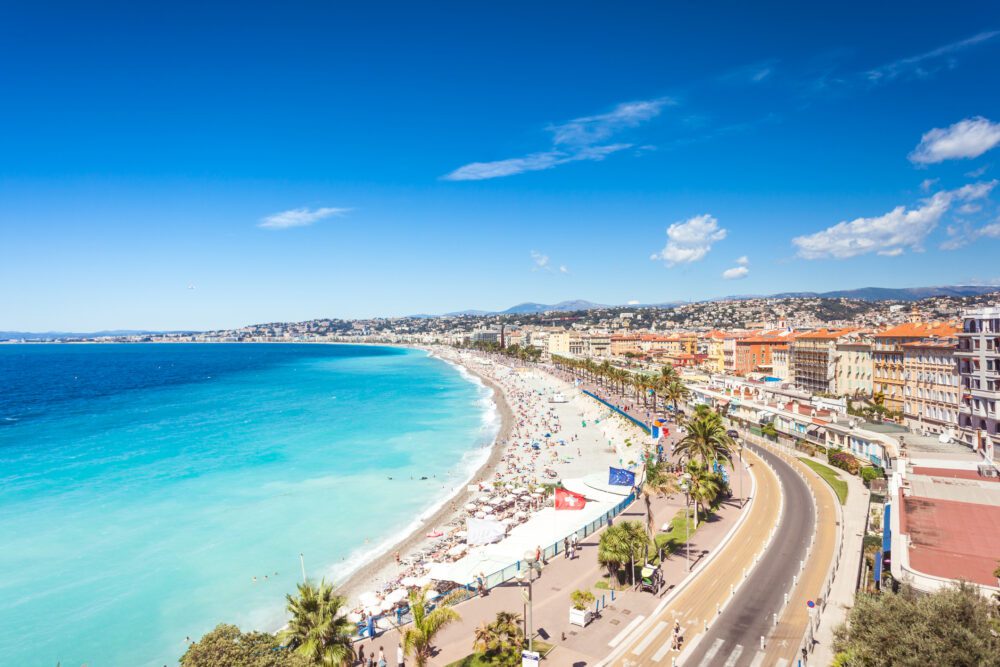
Introduction
Nestled along the picturesque French Riviera, Nice is a captivating city known for its stunning Mediterranean coastline, vibrant culture, and rich history. With its warm climate, azure waters, and colourful streets, Nice has long been a favourite destination for travellers seeking a blend of relaxation, culture, and adventure. Founded by the Greeks around 350 BCE, Nice has a storied past that includes periods of Roman rule, medieval splendour, and Belle Époque elegance. Today, it stands as a bustling cosmopolitan hub, where ancient charm seamlessly mingles with modern sophistication, offering visitors a wealth of experiences to discover.
Boasting a wealth of attractions and activities, Nice offers something for every traveller. Whether you’re strolling along the iconic Promenade des Anglais, exploring the charming Old Town with its narrow cobblestone streets and vibrant markets, or soaking up the sun on one of its many picturesque beaches, Nice exudes an undeniable allure. Art enthusiasts will delight in the city’s world-class museums, while food lovers can indulge in the flavours of Provencal cuisine at one of its many bustling bistros and restaurants. With its breathtaking landscapes, rich cultural heritage, and endless opportunities for relaxation and exploration, Nice promises an unforgettable getaway for visitors from around the world.
Table of Contents
Map of the Best Things to Do in Nice
Old Town (Vieux Nice)
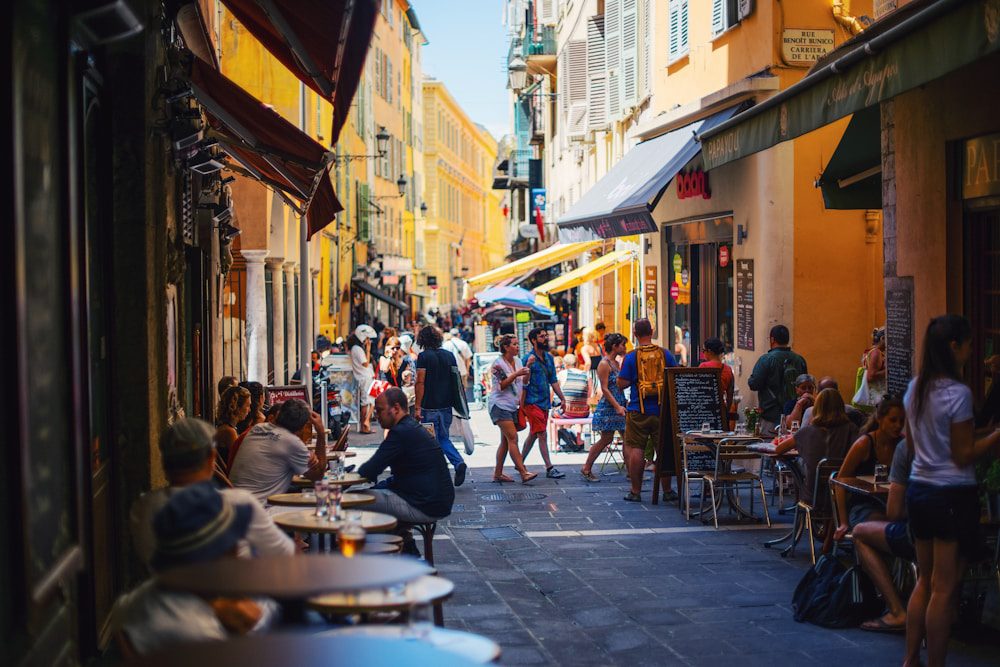
Nice’s Old Town, also known as Vieux Nice, is a charming maze of narrow cobblestone streets, colourful buildings, and bustling squares that offer a glimpse into the city’s rich history and vibrant culture. Dating back to the 16th century, the Old Town is steeped in tradition and is home to some of Nice’s most iconic landmarks, including the stunning Baroque-style Cathédrale Sainte-Réparate and the lively Cours Saleya market. As you wander through its labyrinthine alleys, you’ll encounter an array of charming boutiques, artisan shops, and quaint cafes, where you can savour traditional Niçois specialities such as socca (a chickpea pancake) and pissaladière (a savoury onion tart). Don’t miss the chance to explore the Palais Lascaris, a beautifully preserved 17th-century mansion that now serves as a museum showcasing the city’s art and history.
Practical tips for exploring Old Town include wearing comfortable walking shoes, as the streets can be uneven and hilly in some areas. It’s also advisable to visit during the morning or late afternoon to avoid the crowds, especially during the peak tourist season. Additionally, be sure to keep an eye out for pickpockets, particularly in crowded areas. For a memorable experience, consider joining a guided walking tour of the Old Town, where knowledgeable guides will lead you through its fascinating history and hidden gems, providing insights into the city’s past and present.
Nice Cathedral
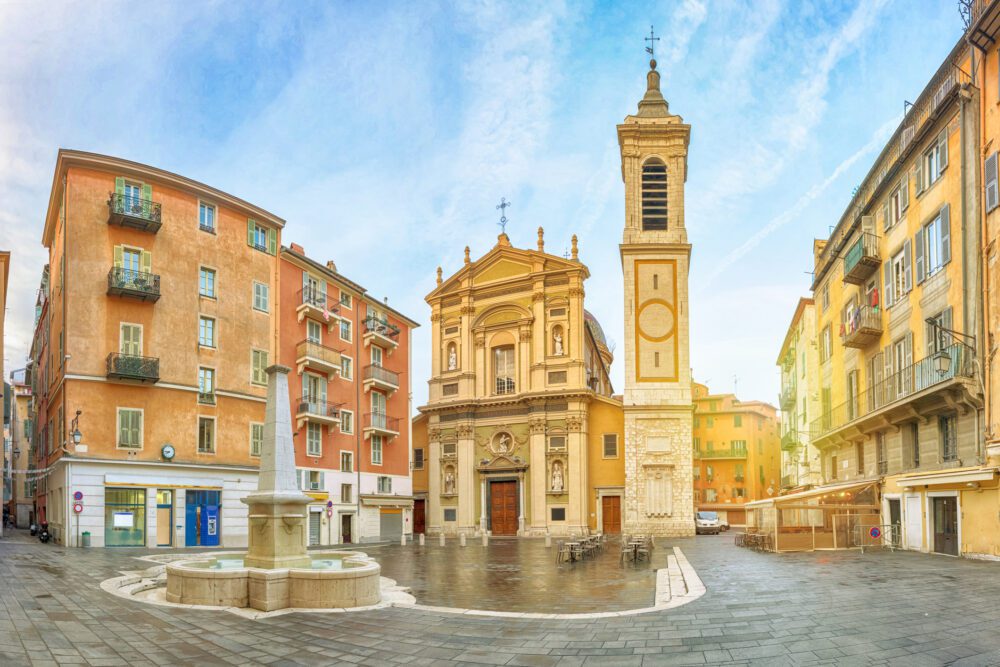
The Nice Cathedral, officially known as the Cathédrale Saint-Nicolas de Nice, stands as a testament to the city’s rich architectural heritage and religious significance. Constructed between the 17th and 19th centuries, the cathedral showcases a blend of architectural styles, including Baroque, Neo-Classical, and Neo-Gothic elements. Its impressive façade features intricate stone carvings and sculptures, while its soaring interior is adorned with stunning frescoes and ornate stained glass windows. One of the highlights of the cathedral is its magnificent organ, which dates back to the 19th century and is renowned for its exceptional acoustics. Visitors can admire the cathedral’s beautiful artwork and religious artefacts, including a venerated statue of Saint Nicholas, the patron saint of sailors.
Practical tips for visiting the Nice Cathedral include dressing appropriately, as it is a place of worship, and being respectful of religious services that may be taking place. Admission is free, but donations are appreciated to support the maintenance of the cathedral. Guided tours are available for those who wish to learn more about the history and significance of this architectural gem. Additionally, visitors can climb the cathedral’s bell tower for panoramic views of Nice and the surrounding area, offering a unique perspective of the city’s skyline and coastline.
Castle Hill (Colline du Château)

Perched high above the azure waters of the Mediterranean Sea, Castle Hill (Colline du Château) is an iconic landmark in Nice with a rich history and breathtaking views. Historically, this strategic location has been occupied since ancient times, with the earliest known settlement dating back to the 4th century BC. Over the centuries, Castle Hill served various purposes, including as a military stronghold and a site for defensive fortifications. However, much of the original structures were destroyed during the Siege of Nice in 1706. Today, the hill is a beloved public park, offering locals and visitors alike a tranquil retreat from the hustle and bustle of the city below. Strolling along its winding paths, visitors can explore remnants of the ancient fortifications, including ruins of the former citadel, as well as cannons and military artefacts.
Practical tips for visiting Castle Hill include wearing comfortable shoes, as there are several staircases and pathways to navigate. For those who prefer not to walk, a lift is available near the Promenade des Anglais, providing easy access to the top of the hill. Once there, visitors can enjoy panoramic views of Nice, the Mediterranean coastline, and the surrounding hillsides. The hilltop also features lush gardens, shaded picnic areas, and children’s playgrounds, making it an ideal spot for a leisurely afternoon outing. Additionally, visitors can explore the waterfalls and cascades that dot the landscape, adding to the charm and tranquillity of this historic site.
Cours Saleya Market
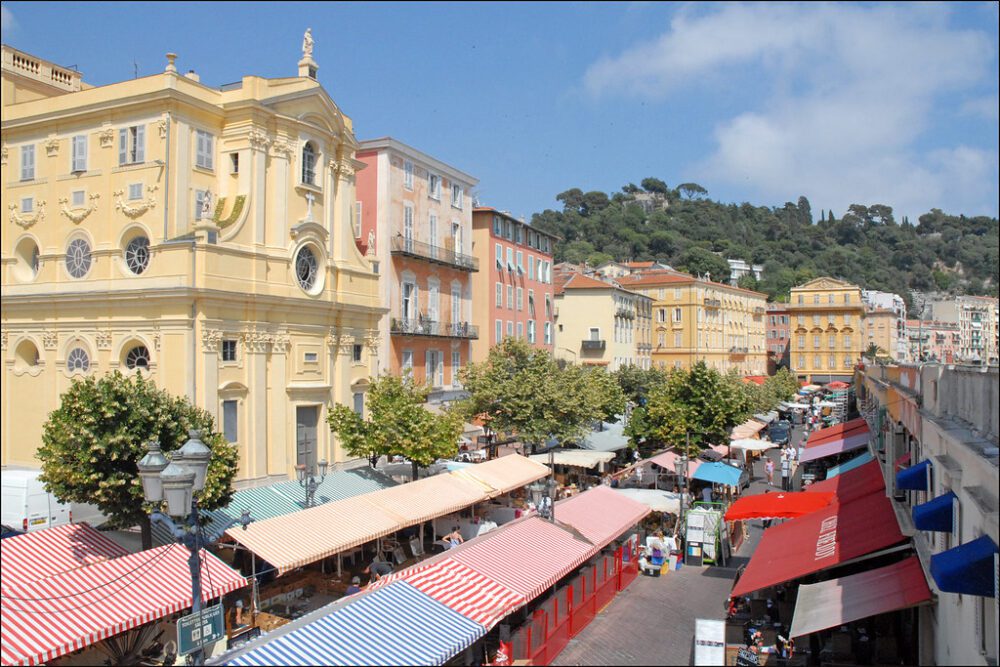
Cours Saleya Market is a vibrant and colourful open-air market located in the heart of Nice’s Old Town. Steeped in history, the market traces its roots back to the 13th century when it served as a hub for local trade. Over the centuries, it has evolved into one of the city’s most famous markets, renowned for its fresh produce, flowers, and local delicacies. Today, Cours Saleya is divided into two sections: a flower market and a food market. The flower market, which operates daily except Mondays, showcases an array of blooms in every hue imaginable, creating a feast for the senses. Visitors can stroll through rows of vibrant flowers, including roses, lilies, and sunflowers, and even purchase bouquets to brighten their day.
The food market, held every morning except Mondays, offers a tantalizing array of local produce, seafood, cheeses, meats, and artisanal products. From freshly caught fish to ripe fruits and vegetables, the market showcases the best of Provencal cuisine. Visitors can sample regional specialities like socca (a chickpea pancake), pissaladière (a savoury onion tart), and pan bagnat (a traditional Niçoise sandwich) or pick up ingredients to create their own culinary creations. In addition to food and flowers, the market also features stalls selling antiques, crafts, and souvenirs, making it the perfect place to find unique gifts and mementoes of your time in Nice.
Nice Opera House
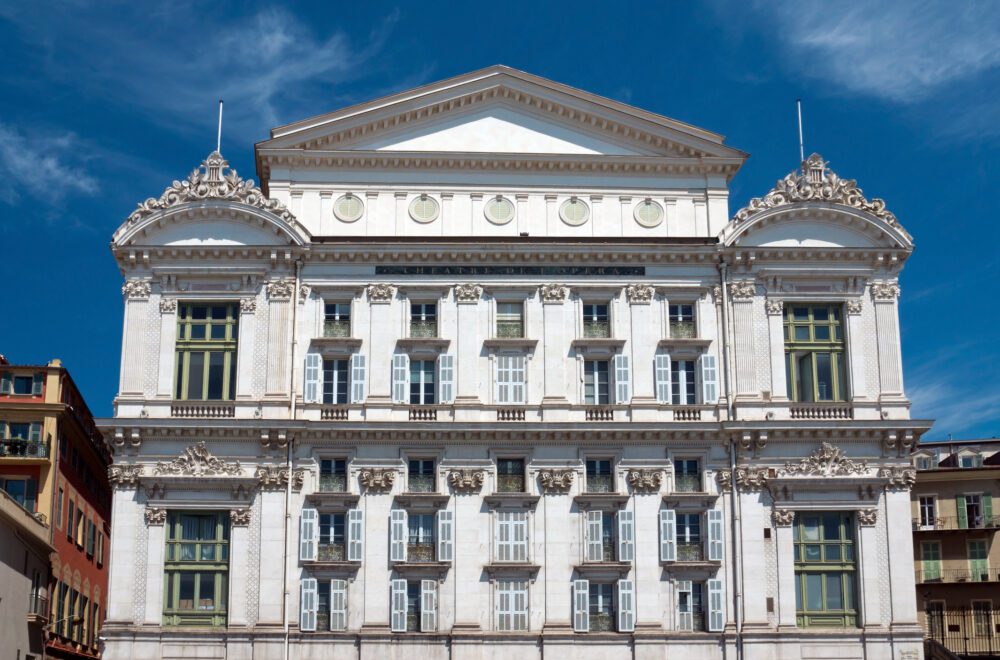
The Nice Opera House, also known as the Opéra de Nice, is a magnificent cultural institution that stands as a testament to the city’s rich artistic heritage. Built in the late 19th century, the opera house is an architectural gem, showcasing a stunning blend of Neo-Classical and Baroque styles. Its grand facade, adorned with intricate sculptures and ornate details, is a sight to behold and sets the stage for the elegance and opulence found within. The opera house has played a central role in the cultural life of Nice since its inauguration in 1885, hosting a diverse range of performances including opera, ballet, classical concerts, and theatre productions. Over the years, it has welcomed some of the world’s most renowned artists and performers, cementing its reputation as one of the premier cultural venues in the region.
Today, visitors to Nice have the opportunity to experience the magic of the opera house firsthand by attending one of its many performances. From classic operas by Mozart and Verdi to contemporary ballets and avant-garde theatre productions, the opera house offers a diverse program that appeals to all tastes and preferences. In addition to its regular performances, the opera house also hosts special events, gala evenings, and educational programs designed to engage audiences of all ages. For those interested in exploring the history and architecture of the building, guided tours are available, providing insight into the opera house’s fascinating past and offering a behind-the-scenes look at its inner workings.
Place Masséna
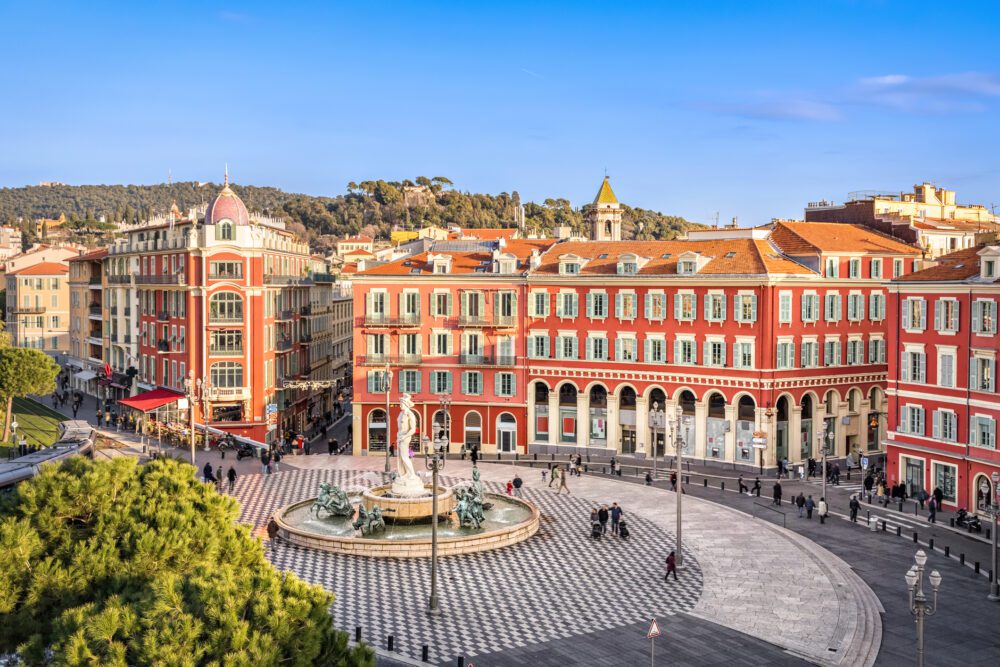
Place Massena stands as one of Nice’s most iconic and bustling squares, serving as the vibrant heart of the city. Its history dates back to the 19th century when it was redesigned by the architect Joseph Vernier. The square underwent significant renovations in the 20th century, notably in the 1970s when it was pedestrianized and adorned with its distinctive black and white checkerboard pattern, designed by artist Yves Bayard. Surrounded by elegant buildings with classical facades, Place Massena exudes an air of grandeur and sophistication. At its centre stands the Fontaine du Soleil, a stunning fountain adorned with sculptures depicting Greek mythology, including the Greek god Apollo.
Today, Place Massena is not only a historic landmark but also a lively hub of activity, teeming with locals and visitors alike. The square is lined with cafes, restaurants, and shops, making it the perfect spot for a stroll or a relaxing coffee break. It serves as a venue for various events and performances throughout the year, from music concerts and street performances to seasonal markets and festivals. In the evening, the square is beautifully illuminated, with its striking red facades and dazzling lights creating a magical ambience.
Promenade des Anglais
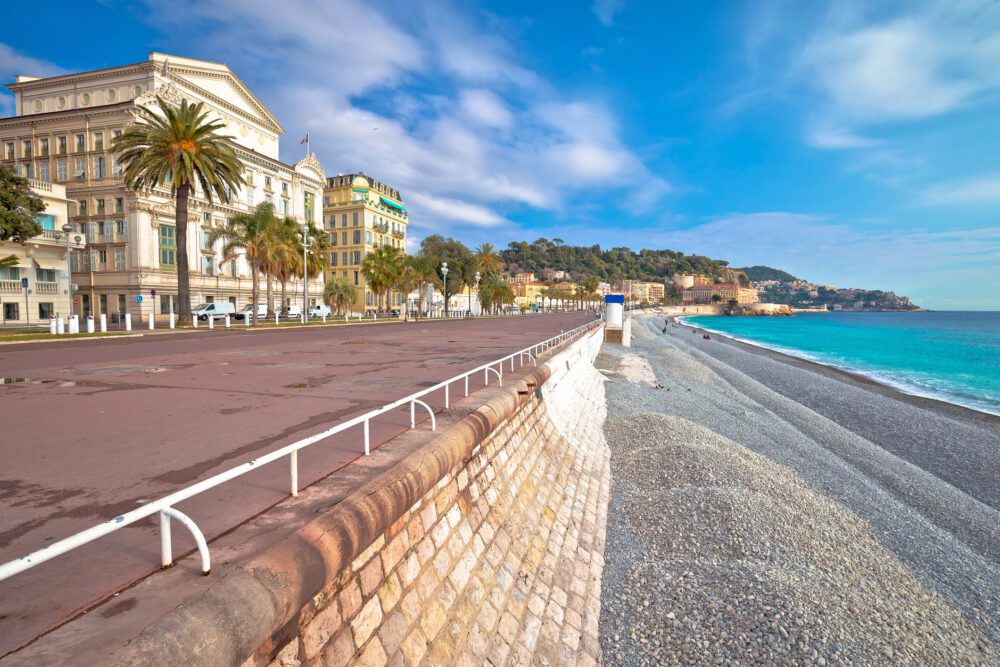
The Promenade des Anglais, stretching along the stunning coastline of Nice, is an iconic symbol of the city’s charm and elegance. Its history dates back to the 19th century when it was built by the English aristocracy as a leisurely walkway along the Mediterranean Sea. Initially a favourite destination for British aristocrats seeking the mild climate of the French Riviera, the promenade quickly became a beloved gathering place for locals and visitors alike. Over the years, it has evolved into a bustling hub of activity, lined with palm trees, cafes, and luxury hotels, offering breathtaking views of the azure sea and the famous Baie des Anges (Bay of Angels).
Today, the Promenade des Anglais remains one of Nice’s most popular attractions, drawing crowds of tourists and locals year-round. Visitors can enjoy strolls or bike rides along the promenade, soaking in the Mediterranean sun and refreshing sea breeze. The promenade also offers access to several public and private beaches, where visitors can relax on the pristine sands or indulge in water sports activities such as swimming, paddleboarding, and sailing. Additionally, the promenade hosts various events and festivals throughout the year, including the iconic Nice Carnival and the Ironman France Triathlon.
Masséna Museum

The Masséna Museum, located in the heart of Nice’s historic centre, offers a fascinating glimpse into the city’s rich history and heritage. Housed in a majestic 18th-century villa, the museum is dedicated to showcasing the art, culture, and history of Nice and the French Riviera. Originally built as the private residence of André Masséna, a prominent military leader and one of Napoleon Bonaparte’s most trusted generals, the villa was later bequeathed to the city of Nice and transformed into a museum in the late 19th century. Today, visitors can explore the museum’s impressive collection of artefacts, paintings, and sculptures that span centuries of Riviera history, from the ancient Greeks and Romans to the Belle Époque era.
Upon entering the museum, visitors are greeted by the grandeur of the villa’s neoclassical architecture and lush gardens, providing a serene oasis amidst the bustling city streets. Inside, the museum’s galleries are filled with a diverse array of exhibits, including archaeological finds, decorative arts, and historical memorabilia. Highlights of the collection include works by renowned artists such as Raoul Dufy and Henri Matisse, as well as artefacts documenting Nice’s maritime heritage and its role as a playground for the European aristocracy in the 19th and early 20th centuries. Visitors can also admire the opulent interiors of the villa, including the lavishly decorated salons and ballrooms that once hosted extravagant soirées and gatherings of the city’s elite.
Saint Nicholas Orthodox Cathedral
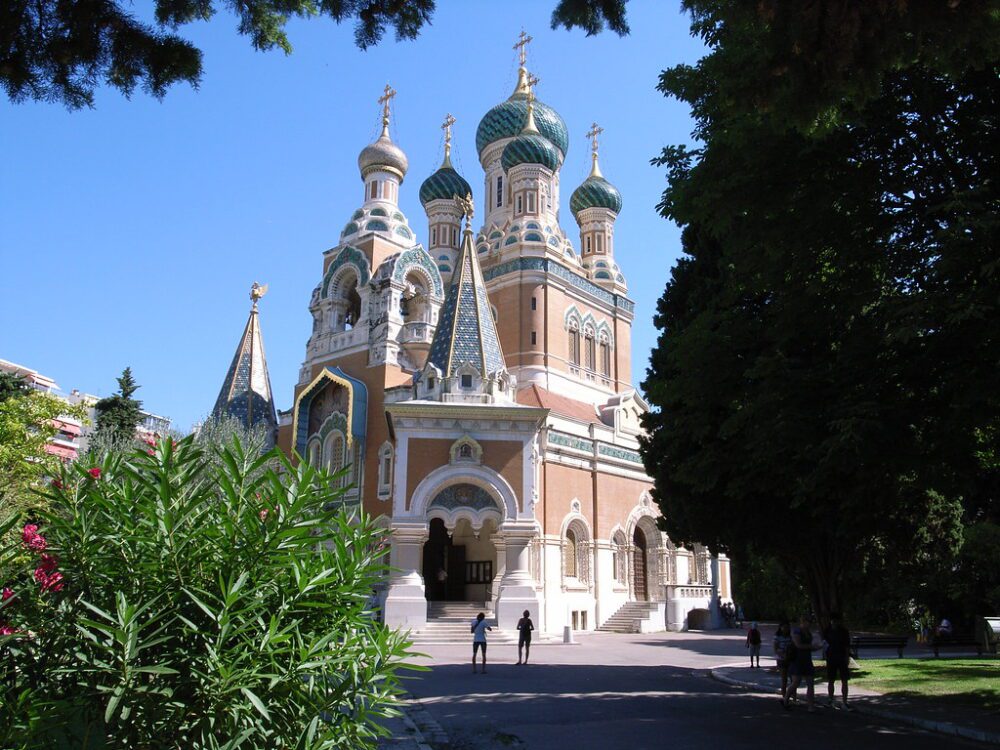
Saint Nicholas Cathedral, commonly known as the Russian Orthodox Cathedral, stands as one of Nice’s most iconic landmarks, a testament to the city’s rich cultural diversity. Completed in the early 20th century, the cathedral boasts a striking Russian Revival architectural style, characterized by its colourful onion domes, intricate mosaics, and ornate façade. Commissioned by Tsar Nicholas II as a place of worship for the growing Russian community in Nice, the cathedral is dedicated to Saint Nicholas, the patron saint of sailors, and serves as a symbol of the longstanding ties between Russia and the French Riviera. Visitors to the cathedral can marvel at its breathtaking exterior adorned with vibrant hues and intricate details, while the interior features stunning icons, elaborate frescoes, and a sense of tranquillity that invites contemplation and reflection.
Practical tips for visiting Saint Nicholas Cathedral include respecting the cathedral’s religious significance by dressing modestly and refraining from loud conversations or disruptive behaviour. Guided tours are available for those interested in learning more about the history and architecture of the cathedral, providing insights into its construction and significance within the local community. Additionally, visitors can attend one of the regular religious services held at the cathedral, offering an opportunity to experience the timeless rituals of the Orthodox faith in a serene and spiritually uplifting setting. With its unique blend of architectural beauty, cultural significance, and spiritual resonance, Saint Nicholas Cathedral stands as a must-visit attraction for anyone exploring the vibrant city of Nice.
Museum of Modern and Contemporary Art (MAMAC)
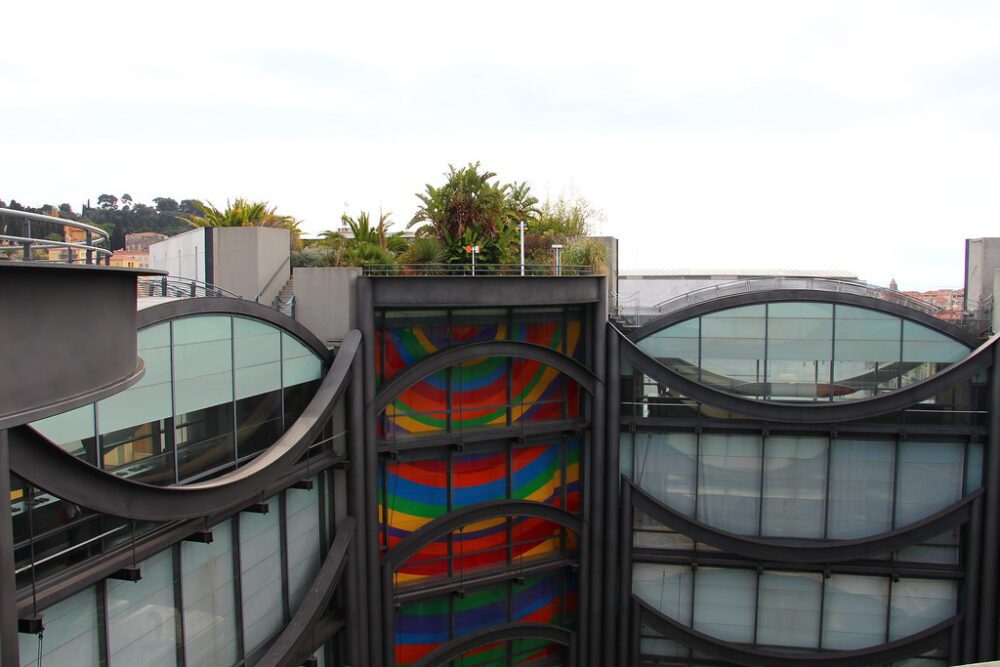
The Museum of Modern and Contemporary Art (MAMAC) in Nice is a cultural gem that showcases an impressive collection of contemporary art from the 1950s to the present day. Situated in the heart of the city, near the famous Promenade des Anglais, MAMAC boasts a sleek and modern architectural design that perfectly complements the innovative artworks housed within its walls. The museum’s collection includes works by renowned artists such as Yves Klein, Niki de Saint Phalle, and Andy Warhol, as well as a diverse range of temporary exhibitions that explore various themes and artistic movements. From paintings and sculptures to installations and multimedia displays, MAMAC offers visitors a fascinating journey through the ever-evolving landscape of contemporary art.
Practical tips for visiting MAMAC include checking the museum’s website for information on current exhibitions, opening hours, and ticket prices. Guided tours and audio guides are available for those seeking a deeper understanding of the artworks on display, providing insights into the artists’ creative processes and the historical context of their work. Additionally, visitors can take advantage of the museum’s onsite facilities, which include a gift shop where they can purchase souvenirs and art-related merchandise, as well as a café where they can relax and enjoy refreshments while soaking in the cultural ambience.
Marc Chagall National Museum

The Marc Chagall National Museum in Nice is a testament to the artistic legacy of one of the 20th century’s most celebrated painters. Housed in a striking 17th-century villa in the Cimiez neighbourhood, the museum is dedicated to showcasing the works of Marc Chagall, a Russian-French artist known for his unique blend of Cubism, Surrealism, and Fauvism. The museum’s collection includes a vast array of Chagall’s masterpieces, including paintings, sculptures, stained glass windows, and tapestries, offering visitors a comprehensive overview of his artistic evolution throughout his prolific career. One of the highlights of the museum is the series of monumental biblical paintings that adorn the ceiling of the main hall, which Chagall himself considered to be some of his most significant and personal works.
Practical tips for visiting the Marc Chagall National Museum include purchasing tickets in advance to avoid long queues, especially during peak tourist seasons. The museum is open daily except for Tuesdays and certain public holidays, and visitors can explore at their own pace or opt for guided tours led by knowledgeable staff members. Additionally, visitors can take advantage of the museum’s serene garden courtyard, where they can relax and enjoy the peaceful ambience while admiring the surrounding Mediterranean vegetation.
Matisse Museum
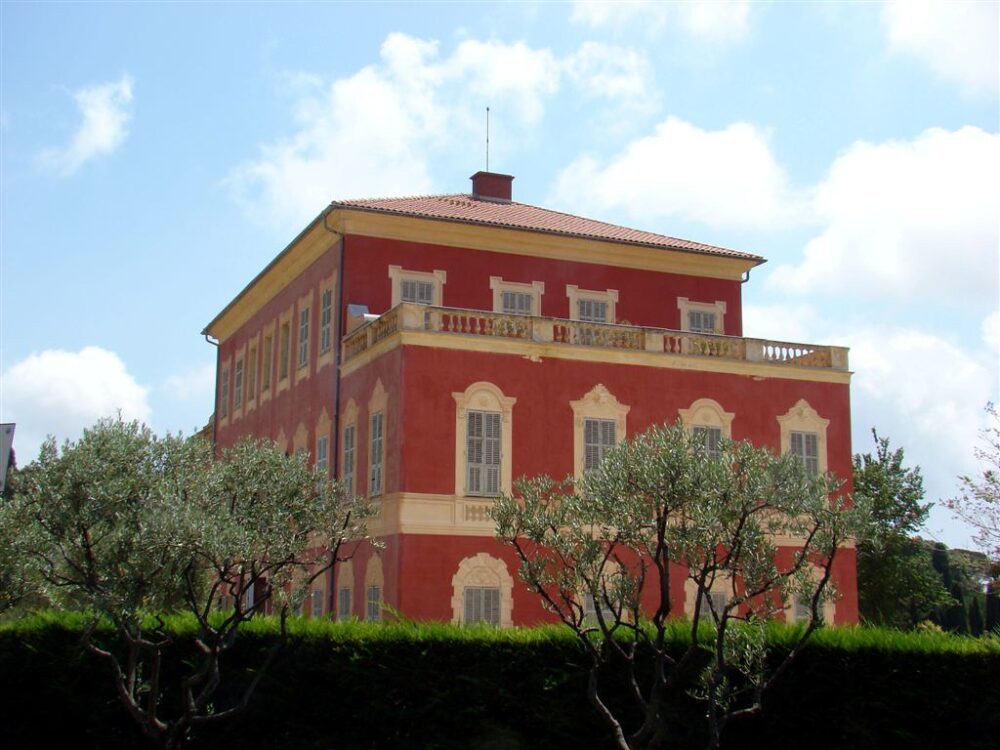
Situated in the picturesque neighbourhood of Cimiez, the Matisse Museum in Nice pays homage to the iconic French artist Henri Matisse. Housed in a charming 17th-century Genoese villa, the museum showcases an impressive collection of Matisse’s works, spanning his illustrious career from his early paintings to his later cut-outs. Visitors to the museum can admire a diverse array of artworks, including paintings, sculptures, drawings, and personal belongings of the artist. One of the highlights of the museum is the extensive collection of Matisse’s vibrant and colourful cut-outs, which demonstrate his innovative use of form and colour in creating bold and dynamic compositions.
For practical tips when visiting the Matisse Museum, it’s advisable to check the museum’s opening hours in advance, as they may vary depending on the season. Additionally, purchasing tickets online or arriving early can help avoid long queues, especially during peak tourist times. The museum’s tranquil garden, adorned with olive and orange trees, offers a peaceful retreat where visitors can relax and appreciate the beauty that inspired Matisse’s artwork. Whether you’re an admirer of Matisse’s oeuvre or simply appreciate modern art, a visit to the Matisse Museum promises a captivating journey through the life and works of one of the 20th century’s most influential artists.
Cimiez Monastery
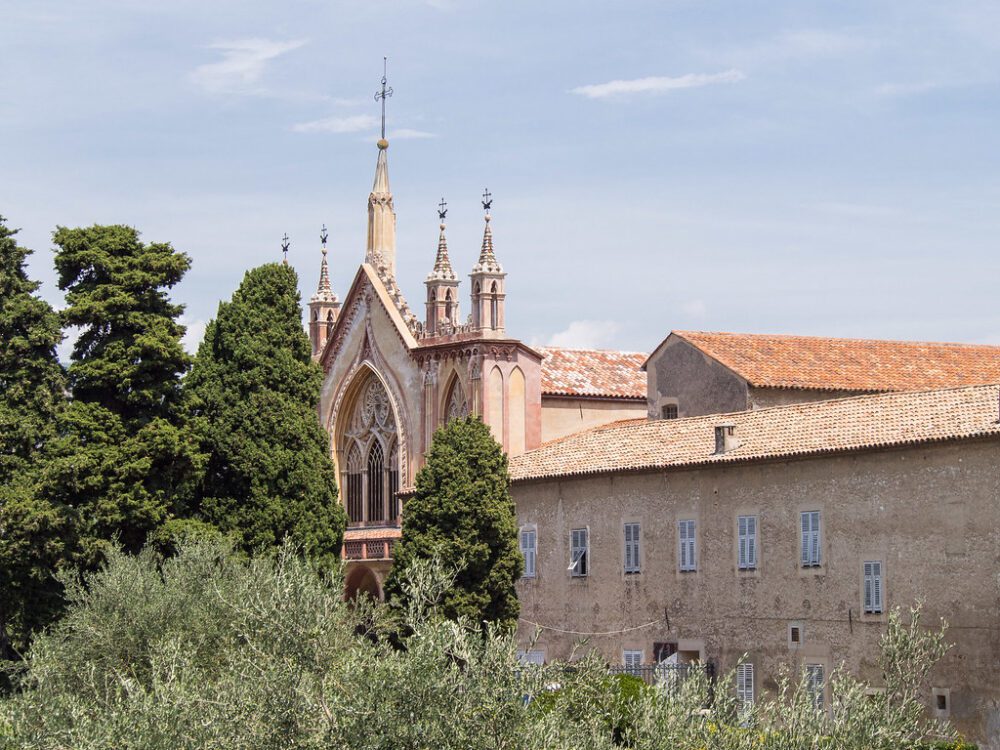
Perched atop the scenic hills of Cimiez in Nice, the Cimiez Monastery is a captivating architectural gem steeped in history and spirituality. Originally founded by the Benedictine monks in the 9th century, the monastery has undergone several renovations and expansions over the centuries, reflecting a blend of Romanesque, Gothic, and Baroque architectural styles. One of the monastery’s main attractions is the Church of Our Lady of the Assumption, a splendid example of Baroque architecture adorned with ornate frescoes and intricate stucco decorations. Visitors can explore the tranquil cloister, which features a beautiful garden filled with Mediterranean flora, providing a serene oasis away from the hustle and bustle of the city.
For those planning a visit to the Cimiez Monastery, it’s recommended to check the monastery’s opening hours in advance, as they may vary depending on the season. Guided tours are available, offering insightful commentary on the monastery’s rich history and architectural significance. After exploring the monastery, visitors can take a stroll through the surrounding gardens and enjoy panoramic views of Nice and the azure waters of the Mediterranean Sea.
Parc du Mont Boron
Parc du Mont Boron, nestled on the eastern edge of Nice, offers a serene escape into nature with stunning panoramic views of the Mediterranean Sea and the city below. Originally a rocky wilderness, the park was transformed in the early 20th century into a lush green space with winding pathways, shaded groves, and vibrant gardens. The park’s creation was part of a larger urban development project initiated by the city to enhance the quality of life for its residents and visitors. Today, Parc du Mont Boron remains a popular destination for nature lovers, hikers, and picnickers seeking tranquillity amidst the beauty of the French Riviera.
Visitors to Parc du Mont Boron can explore a network of well-marked trails that wind through the park’s diverse landscape, offering opportunities for strolls or more challenging hikes. Along the way, hikers can discover hidden gems such as the ruins of an ancient fortress and secluded viewpoints offering breathtaking vistas of the coastline. Practical tips for enjoying the park include wearing comfortable footwear suitable for walking on uneven terrain and bringing plenty of water, especially during the warmer months. Additionally, visitors can take advantage of the park’s picnic areas and benches to relax and soak in the natural beauty of the surroundings.
Villefranche-sur-Mer

Nestled between Nice and Monaco along the stunning French Riviera, Villefranche-sur-Mer is a picturesque coastal town renowned for its colourful buildings, charming Old Town, and scenic waterfront promenade. The town’s history dates back to ancient times, with evidence of settlement by the Greeks and Romans. Villefranche-sur-Mer later became a strategic stronghold for various powers throughout the centuries due to its natural harbour. During the Middle Ages, it was part of the County of Provence before later falling under the control of the House of Savoy and eventually becoming part of France in the 19th century. Today, Villefranche-sur-Mer retains much of its historic charm, attracting visitors with its tranquil atmosphere, vibrant markets, and stunning vistas of the Mediterranean Sea.
Exploring Villefranche-sur-Mer’s Old Town reveals narrow cobblestone streets lined with pastel-hued buildings adorned with colourful shutters and blooming flower boxes. The town’s main square, Place de la Paix, is a bustling hub filled with cafes, shops, and local artisans selling handmade crafts and souvenirs. Visitors can wander through the labyrinthine alleys, discover hidden squares, and admire centuries-old architecture, including the 14th-century Saint-Michel Church with its distinctive bell tower. Practical tips for visiting Villefranche-sur-Mer include wearing comfortable shoes for exploring the town’s steep and winding streets and bringing a camera to capture the charming scenery. Additionally, visitors can soak up the Mediterranean sunshine at one of the town’s sandy beaches or enjoy a stroll along the waterfront promenade, where they can admire views of colourful fishing boats bobbing in the harbour against the backdrop of azure waters and rugged cliffs.
Conclusion
Nice offers a delightful blend of history, culture, and natural beauty that captivates visitors from around the world. Whether exploring the winding streets of the Old Town, basking in the Mediterranean sunshine on the Promenade des Anglais, or immersing oneself in the vibrant local markets, there is something for everyone to enjoy in this charming city on the French Riviera. From its rich history dating back to ancient times to its modern attractions and bustling atmosphere, Nice truly embodies the essence of the Côte d’Azur.
As visitors bid adieu to this enchanting city, they take with them memories of breathtaking sunsets over the azure sea, the tantalizing aromas of Provençal cuisine, and the warmth of Mediterranean hospitality. Whether it’s a stroll along the seaside promenade, a visit to one of the city’s world-class museums, or simply savouring a glass of rosé at a sidewalk café, Nice leaves an indelible impression on all who have the pleasure of experiencing its charms. With its timeless allure and boundless treasures, Nice remains a must-visit destination for travellers seeking a taste of the French Riviera’s irresistible allure.
